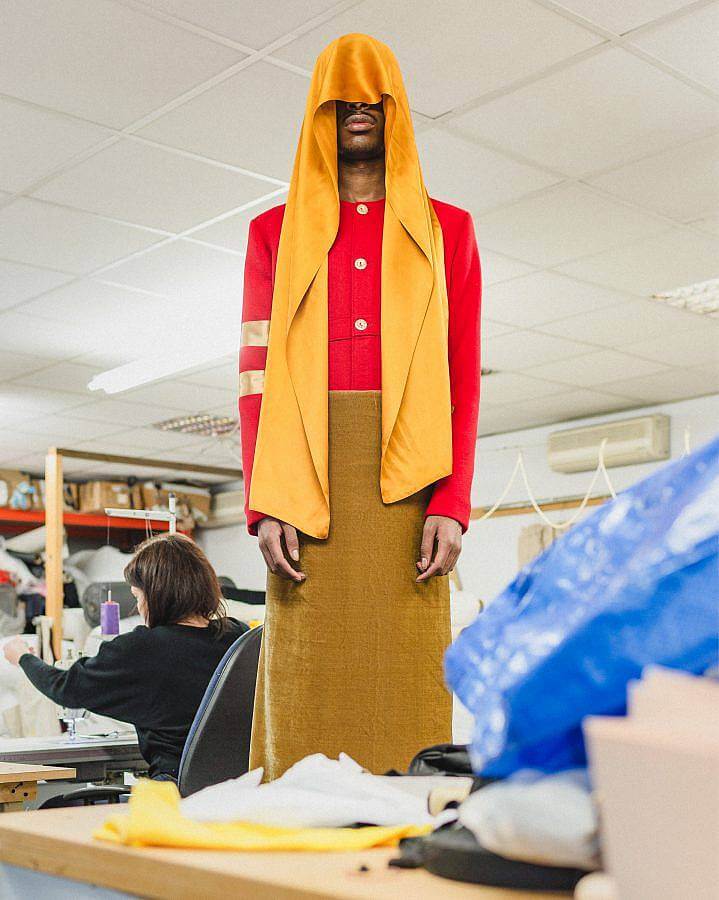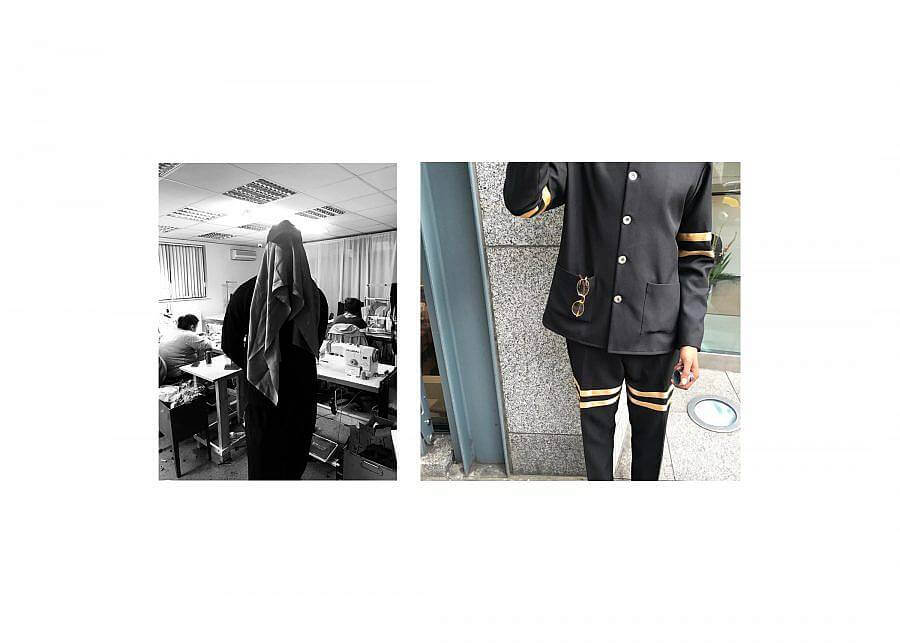Tell us a little bit about yourself and what you do.
Aaron Kudi: Michael and I are both artists working in menswear, where we can showcase our narratives and perspectives with each season. We love and have the most to say with menswear. I say we’re artists because we go through a creative process, that way of thinking and emotional processing, and it’s not just about producing consumer goods for us, it goes further than that.
Money Valentino: My name is Money Valentino, my real name is Michael but I prefer to be addressed as Money as that’s the name attached to my artistic side (and is also my nickname). I’m known as Michael by friends and family. In regards to the brand, I’m co-owner and director alongside Aaron. We both share the same roles and contribute equally, which means we both design and take care of the business side of things too. Outside of the brand, I also produce music and dabble a little in graphic design. I just like to practice design in general.

Top 3 favorite or most visited websites and why?
MV: Tumblr, HYPEBEAST and Grailed. Tumblr is like my Pinterest. I can see posts ranging from fashion, art, design, landscapes and sex. It’s pretty great. It fuels my creativity. HYPEBEAST is my go-to for industry and entertainment news. Grailed is where I go when I’m looking for something to cop. I’m looking for a lot of older Margiela and Issey Miyake.
AK: Nowness, which is a visual platform and that has information on artists, designers and creators – it’s like being back in school but getting to choose what you learn for that day. I really enjoy learning in my own time, reading and digesting. SHOWstudio features a vast array of individuals that have experience in their respective fields and offer knowledge about design and normal life. Also, Google is an amazing tool to search for artists and photographers. Between us, we have like fifty tabs open to different individuals we’re researching and want to know. For us, it’s about stepping out of your comfort zone and not being one-dimensional. We looked at Kerry James Marshall and he blew my mind, just his design thinking and his political perspective. And Arthur Jaffa, again another exceptional artist, with such a high level of transparency both politically and educationally. It’s not just about the art for these guys but how art teaches you, develops your mind and makes you look outward.
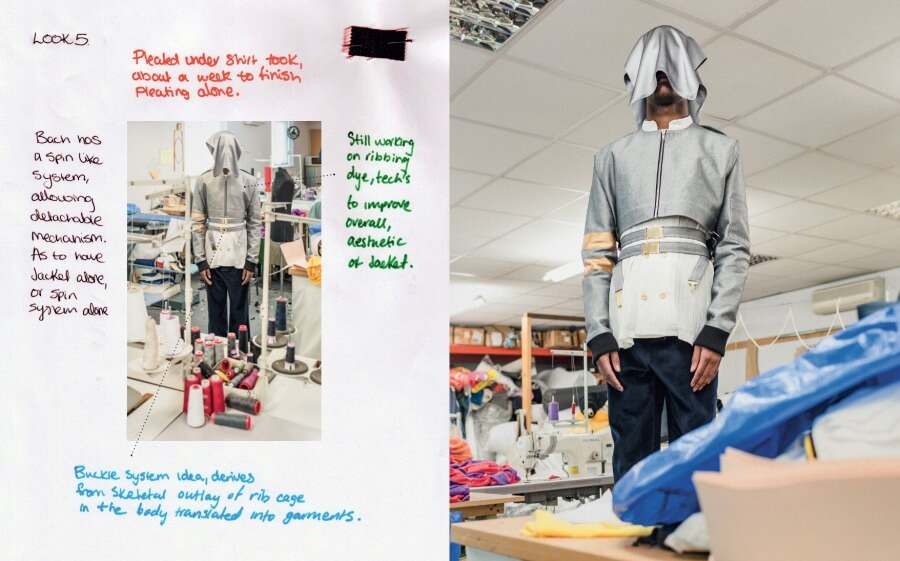
How has living in London affected your work?
AK: London is wonderful. Expensive, but wonderful. I think what influences me the most is the interiors of the houses. The outsides look gloomy because our weather isn’t great. But every time I walk around I like to imagine what the inside of people’s homes look like, their ideas, culture and style. That’s why I like learning what’s behind the scenes with artists and talking with friends about hierarchies of design. If you look up in London, it’s beautiful. In fact, all around England it’s like that. From Bath, to Devon where I grew up, to Manchester, Leeds, they all have their own flavor. You can’t always see it from the outside, but there’s spirit and energy on the inside. The exchange of perspectives is exciting, but breaking through and speaking to people can be hard sometimes. You can talk but only if you know each other. It’s seen as kind of weird to talk to a stranger for information, unless you’re both drunk in a club. Smoking areas are the only places it’s probably not weird.
MV: For me, it hasn’t so much affected the work, but rather the mindset. From being looked down upon ten years ago for wearing tracksuits to seeing it and streetwear influences all across the runway. It’s a pretty awesome feeling. Almost like a “fuck you” to the people who looked down on us when we were young because we just wanted to be cozy. It’s also a reminder to myself that people will make fun of you now because they don’t get it but will copy you or use you as inspiration later on.
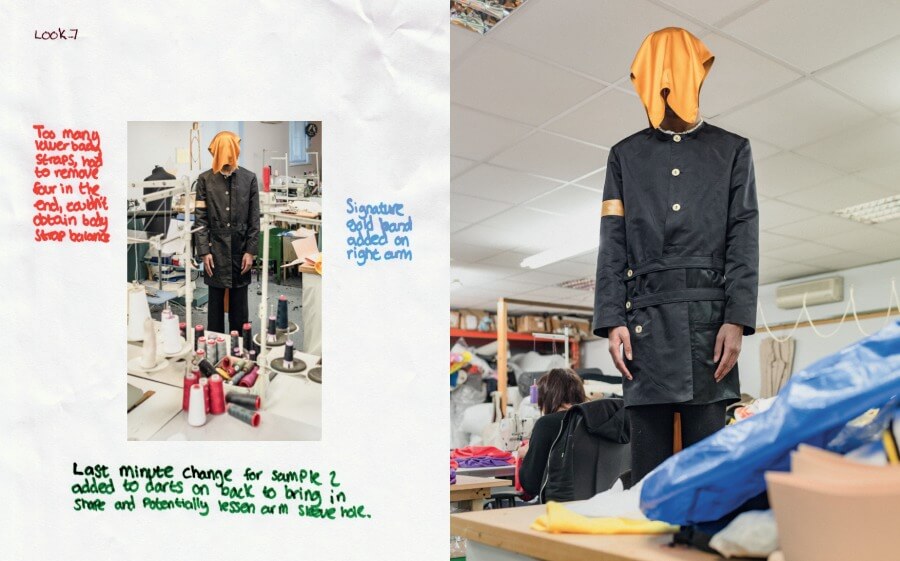
What kinds of things are influencing your work right now?
AK: The world and all that’s in it, staying on the internet to access parts of the world we haven’t been to. I think that’s the wonderful thing about right now, that you can feed yourself what you want with social media. London can be a bubble sometimes. Apart from that, we’re looking at Kandinsky and Pierre Soulages.
With our friends, Durell, Nathan and Jobe, we have these discussion about how design helps humanity. You know, all those important questions because it really is about that. What are you doing in your field that adds to it? We always say that people are saying things but not really saying things at all, nothing deep. It seems as though for most, it’s just about fame and having a following.
MV: Life, generally. Color palettes, shapes and sculptures. Just visuals from everyday life.

What are some recent, upcoming or current projects you are working on?
AK: We’re working on two art installations, then the ready-to-wear collection, winter collection and accessories. And always ourselves, our design process and us as a brand.
If you were a drink what drink would you be?
AK: What’s funny is we had this discussion not long ago, and we kind of said water, its timeless and we’ll always need it. It’s nutritious, helps things grow and offers so much.
MV: Chai during the day, Coke and Henny during the night.
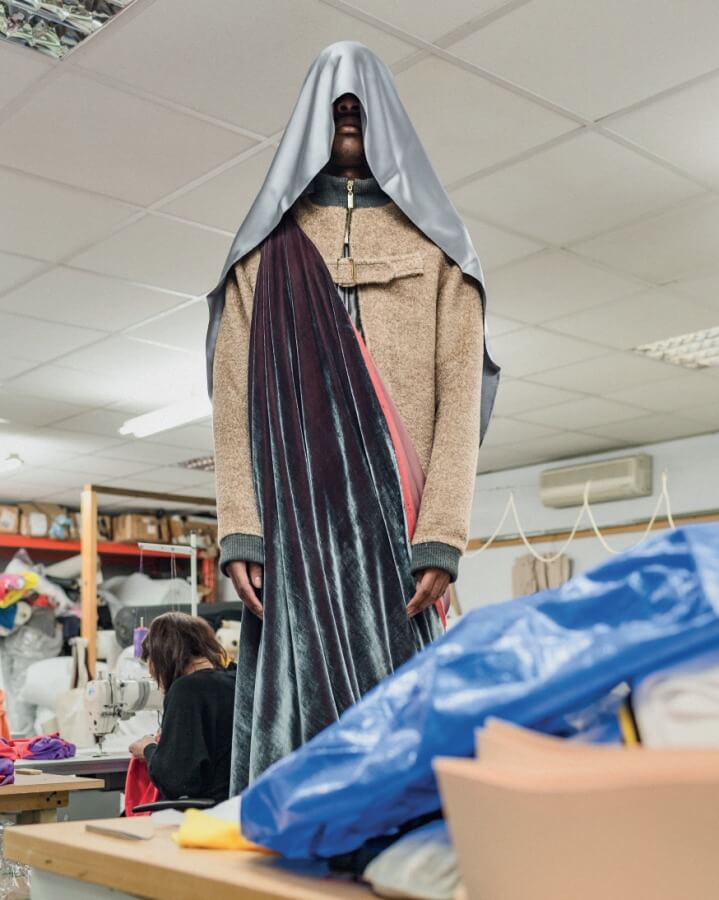
What designers are you interested in right now?
MV: No one specifically except Samuel Ross and Kiko Kostadinov.
AK: I’ve always admired Haider Ackermann, Dries Van Noten, Helmut Lang and Issey Miyake. Mostly designers that have something to say, as well as having an aesthetic we love and admire. For young designers, we like Kiko K. The way he does things is really his own and he isn’t trying to be anything but himself. We admire that way of thinking and his design intelligence. Apart from that, we tend to not look at designers too often now to avoid comparisons and critiques. We’re focusing on our own designs and how we can evolve.
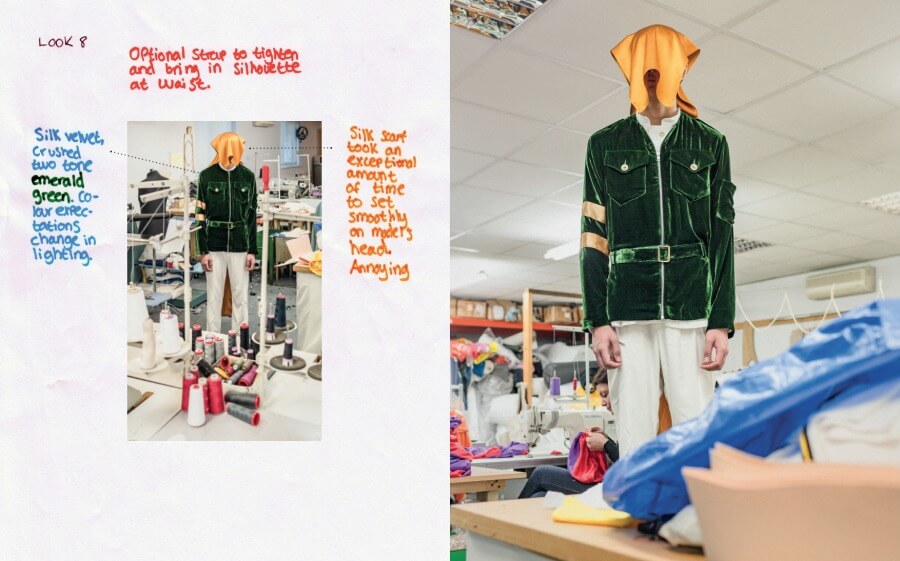
What past trends in fashion should never come back?
AK: They all do in the end, it’s all cyclical. We can’t really say any trend should never come back because at one point if I was the silhouette of a generation reimagined. There is beauty in terrible trends since they reveal something about society in that moment, how they are consuming things and viewing the world. Even when kitten heels came back, which I detest, it made me think about where we are now.
MV: I’m not a fan of trends in general but I think I’ve seen enough dad shoes, overly long belts, side zips and all-over logo prints.
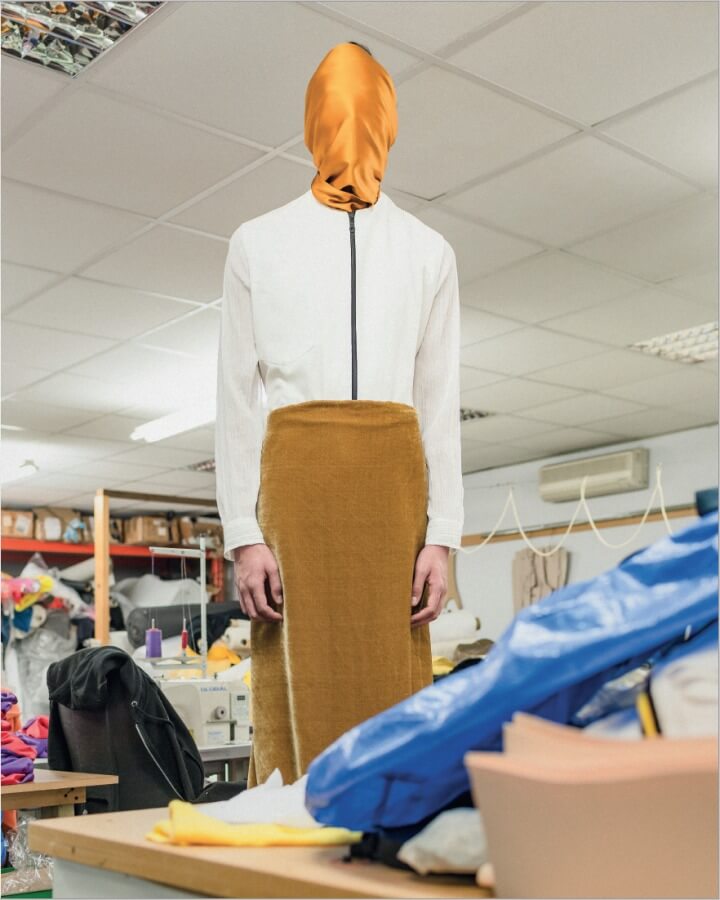
Who would be your dream person to dress or style?
AK: Shia Labeouf. Plain And simple.
MV: Maybe Michelangelo. A great artist should have great style too.
Favorite article of clothing?
MV: Shoes.
AK: This is a different type of article, Raf and Prada in conversation. That interview was insightful and also very raw and honest.

What’s your absolute favorite place in the city/the world to be?
AK: The studio, for creating, researching, and making. The process is important to me.
MV: London is home. I was born and raised here. So, I’m not sure yet. When I start to travel more I’ll let you know.
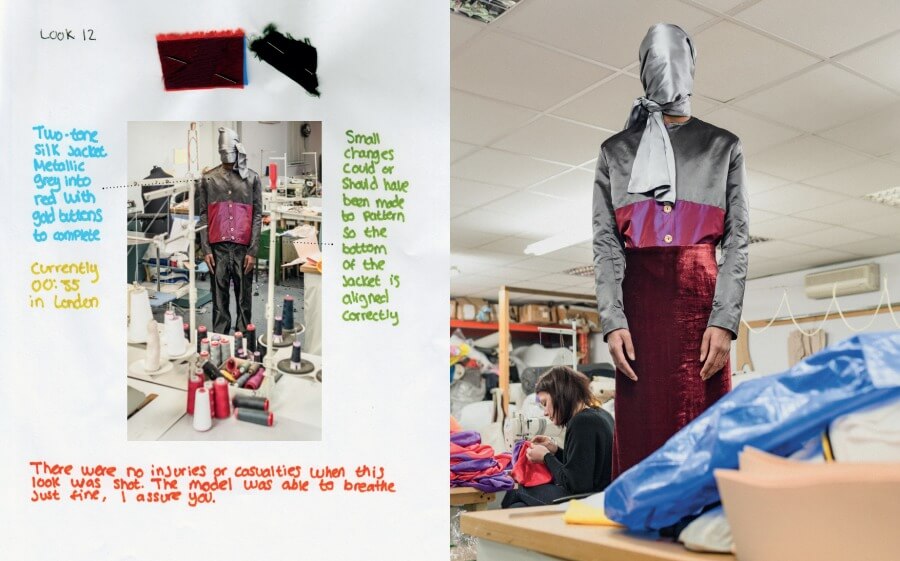
Can you share one of the best or worst reactions you have gotten as a result of your work?
AK: Someone once told us our clothes weren’t wearable, which was nice because it made us better and improved our perspective. We tend to look more at the negative than the positive. We don’t take it all, only what’s most honest and relevant and use it to move forward.
MV: I think the best reaction so far was when we were at CIFF last month and ran into this lady named Karen Binns. I remember I was talking with Aaron to some people and then I noticed this lady behind us who was really taking in our installation so I decided to greet her. From there, Aaron and I began interacting with her and she expressed how impressed she was by our work and how much potential she thinks we have. It was a very humbling moment.
